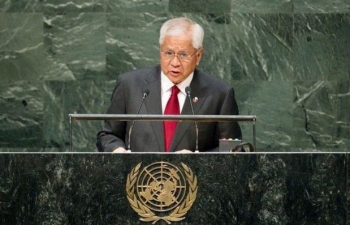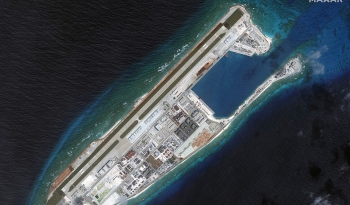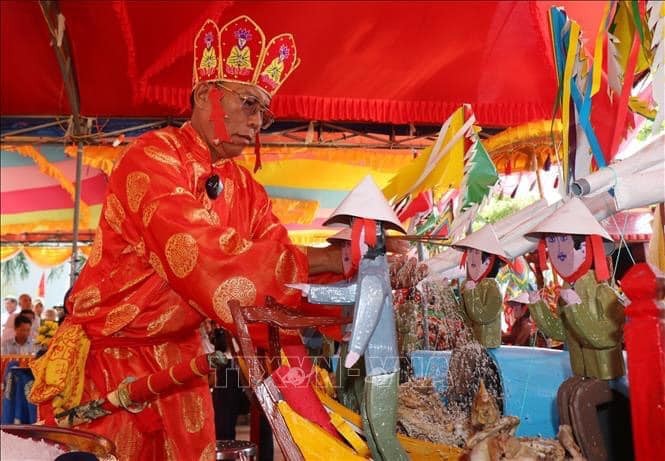People’s Committee of Hoang Sa condemns China’s district formations on East Sea archipelagos
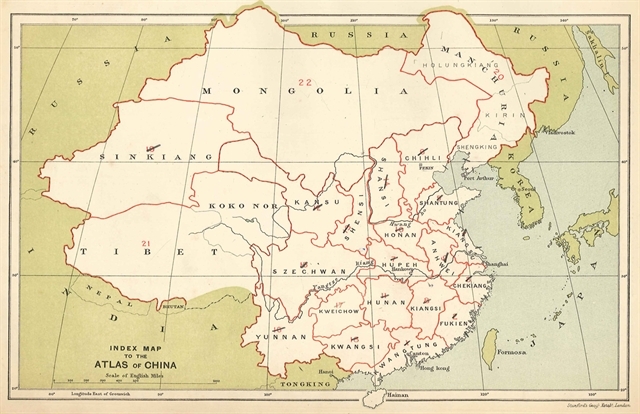 |
| An old map clearly shows Hoang Sa (Paracel) and Truong Sa (Spratly) Archipelagos are not part of China. VNS Photo Cong Thanh |
Chairman of the Hoang Sa District Vo Ngoc Dong made an official statement on Sunday evening, saying the protest was stated at the city’s People's Council on the Chinese State Council’s decision to set up the two administrative regions under so-called Sansha City in Hainan Province from 2021.
The statement clearly reaffirmed Vietnam was the first and the only country to have long ago exploited, occupied and established sovereignty on the two archipelagos.
“The Islands' District People’s Committee asked China to abolish the decisions and stop all illegal activities on the two islands of Vietnam,” it said.
Da Nang had included the Hoang Sa islands in the city’s Master Plan for 2030-50.
The Islands District’s Hoang Sa Museum preserves a collection of 150 maps published between 1618-1859 and 1626-1908. Of which, many show evidence that the Paracel and Spratly archipelagos belong to Vietnam, and 102 books published in English, German, French, Spanish, Italian, Dutch and the Chinese script show the frontier of Southern China is Hainan Island.
Two Postal Atlas Map of China books which were published by the Directorate General of Posts, Ministry of Transportation of the Republic of China in 1919 (consisting of 49 maps) and in 1933 (29 maps) and one Atlas of the Chinese Empire, published by the China Inland Mission in 1909 (23 maps) have been preserved by the district. None of the three books list the Paracels and Spratlys in the maps and index pages.
The district also displays a shipwreck in the museum’s front yard. The vessel was rammed by a Chinese boat in Vietnamese waters off the Hoang Sa Archipelago in 2014.
Currently, 12 people who lived, worked and fought for the archipelago from 1959-1974 are still alive in the city.
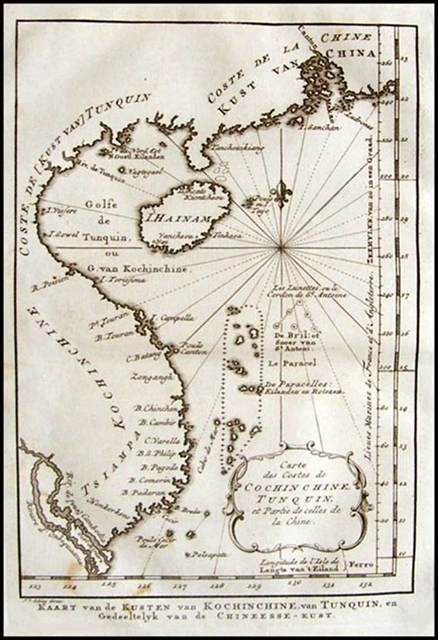 |
| An ancient map indicates two archipelagos of Hoang Sa (Paracel) and Truong Sa (Spratly) belong to Vietnam. VNS Photo Cong Thanh |
The Hoang Sa Islands were illegally seized by Chinese forces on January 19, 1974.
In 2017, American-Vietnamese collector, Tran Thang, donated to Hoang Sa Island District the Pattie De La Conchinchine, an 1827 map printed in the six-volume World Atlas by late Belgian cartographer Phillippe Vandermaelen.
The Pattie De La Conchinchine map indicated the central region was part of Annam (a French protectorate encompassing the central region of Vietnam) and Hoang Sa was under the sovereignty of Vietnam from at least the 19th century onwards.
Many records of the royal Nguyen Dynasty (1802-45); six written in Chinese script and 14 documents from the French colonial period, state that Hoang Sa and Truong Sa belong to Vietnam.
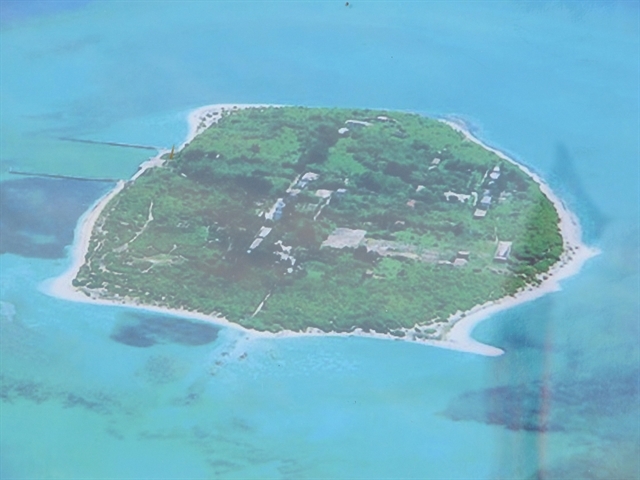 |
| A photo of Hoang Sa (Paracel) Islands of Vietnam is on display at the Hoang Sa Museum in Da Nang. VNS Photo Cong Thanh |
| China announced on April 18 the establishment of what it calls the “Xisha” and “Nansha” districts in Vietnam’s Paracel and Spratly Islands. The Chinese Ministry of Civil Affairs said that its State Council has approved the formation of “Xisha District” on Woody Island on the Paracels and “Nansha District” on the Fiery Cross Reef of the Spratlys. China said the “Xisha District” would manage the Paracel Islands, the Macclesfield Bank and surrounding sea areas, while the “Nansha District” would manage Spratly Islands and surrounding sea areas. China seized the Paracel Islands from South Vietnam by force in 1974, and has since been occupying them illegally. China also formed what’s called the “Sansha City” on the Woody Island since 2012, with the intention of taking control of islands in the East Sea. China has also been illegally building artificial islands in recent years. Vietnam has requested China many times to stop its illegal actions, which complicate the situation and threaten peace and stability in the East Sea. Last month, Vietnam sent a diplomatic note to the United Nations to protest China’s unfounded sovereignty claims over the East Sea. |
 Seas and islands
Seas and islands
Vietnam Demands China Respect The Country's Sovereignty in East Sea
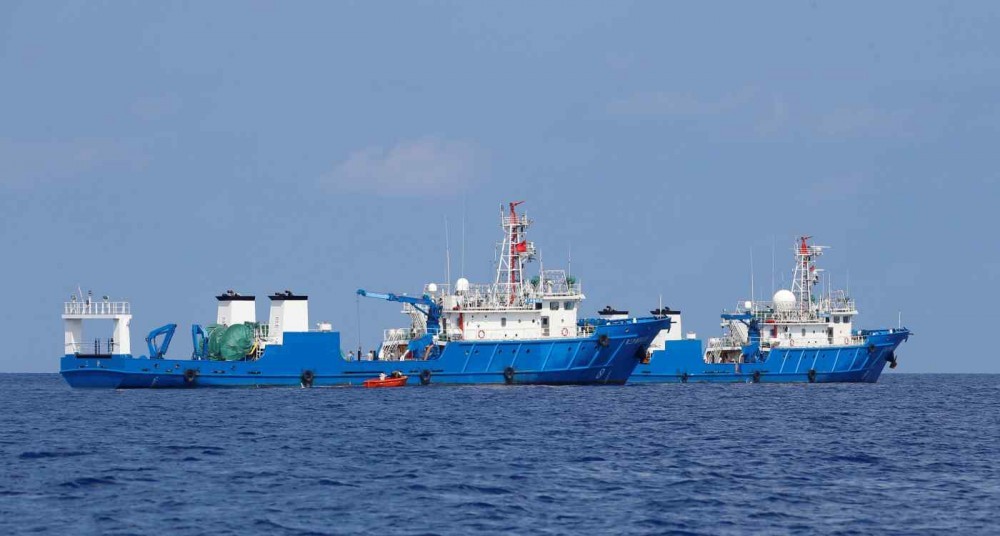 Focus
Focus
Promoting Substantive And Effective Code of Conduct in The South China Sea
Recommended
 Seas and islands
Seas and islands
Vietnam Endorses Common Voice on Ocean Jurisdiction
 Seas and islands
Seas and islands
Dialogue as Key to Settling Disputes and Advancing Law of the Sea
 Seas and islands
Seas and islands
RoK Navy Ship Pays Friendly Visit to Da Nang City
 Seas and islands
Seas and islands
Naval Region 5 Promotes Reading Culture, Fosters Patriotism
 Seas and islands
Seas and islands
Coast Guard Region 2 Command Hosts Philippine Coast Counterpart
 Seas and islands
Seas and islands
Vietnam - Thailand Navy: Coordination to Well Address Problems at Sea
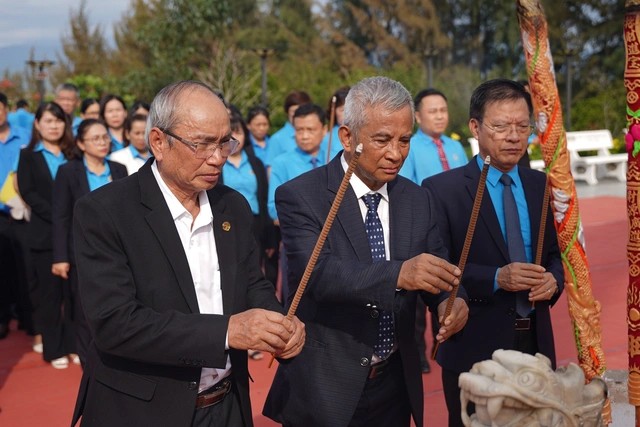 Seas and islands
Seas and islands
Honoring the Fallen: Incense Offering for the 37th Anniversary of Gac Ma
 Seas and islands
Seas and islands


